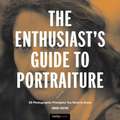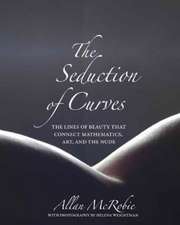The Enthusiast's Guide to Night and Low-Light Photography: Enthusiast's Guide
Autor Alan Hessen Limba Engleză Paperback – 15 mai 2017
Preț: 111.39 lei
Preț vechi: 133.10 lei
-16% Nou
Puncte Express: 167
Preț estimativ în valută:
21.31€ • 22.31$ • 17.64£
21.31€ • 22.31$ • 17.64£
Carte disponibilă
Livrare economică 15-22 martie
Preluare comenzi: 021 569.72.76
Specificații
ISBN-13: 9781681982427
ISBN-10: 1681982420
Pagini: 176
Dimensiuni: 216 x 216 x 11 mm
Greutate: 0.43 kg
Editura: Rocky Nook
Seria Enthusiast's Guide
ISBN-10: 1681982420
Pagini: 176
Dimensiuni: 216 x 216 x 11 mm
Greutate: 0.43 kg
Editura: Rocky Nook
Seria Enthusiast's Guide
Notă biografică
Alan Hess is a commercial photographer based in San Diego, where he lives with his wife and two rescued boxers. Alan has been taking photos for many years and likes to believe that he has made just about every mistake you can with a camera. His goal is to help others avoid making those same mistakes.
Alan is currently the house photographer for a large concert and event venue in Southern California where he photographs everything from major musical acts to ice hockey. When he isn't out taking photographs, he spends his time writing books and is an accomplished photography educator and trainer.
Alan's images have been published in a variety of places including newspapers, magazines, websites, promotional materials, album artwork, and press releases. His clients include The Associated Press, Fox Television, FX Network, USA Network, Hasbro, Framus Guitars, Gibson, The Dead, Picture Group, Photoshop User Magazine, Steel Pulse, Ziggy Marley, and many more.
He is the author of sixteen photography and technology books covering everything from night and low-light photography to multiple-shot techniques. His books are sold around the world and have been translated into languages including Chinese, French, Polish, Japanese, Thai, and Italian.
You can find Alan at www.alanhessphotography.com
Alan is currently the house photographer for a large concert and event venue in Southern California where he photographs everything from major musical acts to ice hockey. When he isn't out taking photographs, he spends his time writing books and is an accomplished photography educator and trainer.
Alan's images have been published in a variety of places including newspapers, magazines, websites, promotional materials, album artwork, and press releases. His clients include The Associated Press, Fox Television, FX Network, USA Network, Hasbro, Framus Guitars, Gibson, The Dead, Picture Group, Photoshop User Magazine, Steel Pulse, Ziggy Marley, and many more.
He is the author of sixteen photography and technology books covering everything from night and low-light photography to multiple-shot techniques. His books are sold around the world and have been translated into languages including Chinese, French, Polish, Japanese, Thai, and Italian.
You can find Alan at www.alanhessphotography.com
Cuprins
Chapter 1: Night and Low-Light Photography Basics
1. Why night and low-light photography is difficult
2. The pros and cons of using long exposures
3. The pros and cons of using wide apertures
4. Using ISO to your advantage
5. Equivalent exposures are important
6. When you can add some light
7. Using Manual exposure mode is the best way to go
8. The built-in light meter lies
9. Focusing in low light
10. Multiple exposures can save your shoot
Chapter 2: All the Gear You Will Want and Need
11. Basic camera needs
12. Bulb mode, and why you need it
13. Noise: how noisy is your camera
14. The often ignored self-timer mode
15. The In-camera time-lapse setting
15. Lens choices: what's your favorite focal length?
16. Variable and constant aperture lenses
18. Keep the camera stable
19. Tripods
20. Monopods
21. Mounts, clamps, and other ways to keep the camera stable
22. Why you need a remote, release, and timer
23. Using a cable release
24. Going wireless with a remote
25. Other ways to trigger your camera remotely
26. Why I love Trigger Trap
Chapter 3: Capturing Action in Low Light
27. How high can you push the ISO?
28. Freezing the action
39. Using the lowest shutter speed possible
30. Panning for action
31. The easy way to get a proper exposure
32. It's critical to focus on the right thing
33. Creating low-light portraits
34. Using a little fill flash
Chapter 4: Capturing a Low-Light scene
35. Using a very slow shutter speed
36. Creating a deep depth of field
37. How to get those starburst street lights
38. Painting with light
39. Photographing the night sky
40. The best light is at sunrise and sunset
41. Photographing the city lights
42. City lights with multiple exposures
Chapter 5: Photoshop Post-Processing Techniques for Low-Light Images
43. Do you need noise reduction?
44. Noise-reduction techniques for action
45. Noise-reduction techniques for scenic photos
46 Correcting the tones in your image
47. Adjusting the white balance for better colors
48. Removing dust and scratches
49. Dodge and burn for contrast
1. Why night and low-light photography is difficult
2. The pros and cons of using long exposures
3. The pros and cons of using wide apertures
4. Using ISO to your advantage
5. Equivalent exposures are important
6. When you can add some light
7. Using Manual exposure mode is the best way to go
8. The built-in light meter lies
9. Focusing in low light
10. Multiple exposures can save your shoot
Chapter 2: All the Gear You Will Want and Need
11. Basic camera needs
12. Bulb mode, and why you need it
13. Noise: how noisy is your camera
14. The often ignored self-timer mode
15. The In-camera time-lapse setting
15. Lens choices: what's your favorite focal length?
16. Variable and constant aperture lenses
18. Keep the camera stable
19. Tripods
20. Monopods
21. Mounts, clamps, and other ways to keep the camera stable
22. Why you need a remote, release, and timer
23. Using a cable release
24. Going wireless with a remote
25. Other ways to trigger your camera remotely
26. Why I love Trigger Trap
Chapter 3: Capturing Action in Low Light
27. How high can you push the ISO?
28. Freezing the action
39. Using the lowest shutter speed possible
30. Panning for action
31. The easy way to get a proper exposure
32. It's critical to focus on the right thing
33. Creating low-light portraits
34. Using a little fill flash
Chapter 4: Capturing a Low-Light scene
35. Using a very slow shutter speed
36. Creating a deep depth of field
37. How to get those starburst street lights
38. Painting with light
39. Photographing the night sky
40. The best light is at sunrise and sunset
41. Photographing the city lights
42. City lights with multiple exposures
Chapter 5: Photoshop Post-Processing Techniques for Low-Light Images
43. Do you need noise reduction?
44. Noise-reduction techniques for action
45. Noise-reduction techniques for scenic photos
46 Correcting the tones in your image
47. Adjusting the white balance for better colors
48. Removing dust and scratches
49. Dodge and burn for contrast
























